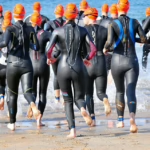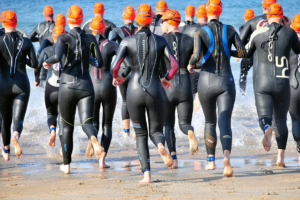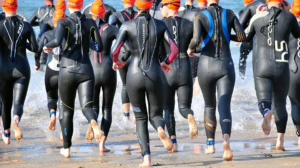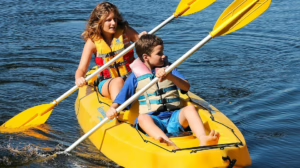Breaking Down the Distances: Understanding Triathlon Race Formats
Introduction
Triathlons are a unique blend of swimming, cycling, and running, making them one of the most demanding yet rewarding endurance sports. Understanding the different race formats and distances can help competitors choose which races best align with their skills, goals, and fitness levels. This article explores the various triathlon formats, their distances, and key considerations for aspiring triathletes.
1. The Evolution of Triathlon
Triathlons began in the 1970s, with the first recognized race occurring in San Diego in 1974. Since then, the sport has evolved significantly, with various formats and race distances emerging to cater to a diverse set of athletes. From sprint distances to the grueling Ironman, each format presents unique challenges and attracts different competitors.
The development of triathlon has led to its inclusion in the Olympic Games since 2000, increasing its visibility and popularity worldwide. The sport has even seen the rise of different disciplines, including indoor triathlons and aquathlons (swim-run events), appealing to a broader audience.
1.1 Key Milestones in Triathlon History
- 1974: The first documented triathlon held in San Diego, California.
- 1982: Formation of the International Triathlon Union (ITU).
- 2000: Triathlon is included in the Sydney Summer Olympics, increasing global recognition.
2. Understanding Triathlon Distances
Triathlon distances can broadly be categorized into several main formats, each varying in distance and used mainly for competitive purposes. Here are the most common ones:
2.1 Sprint Triathlon
- Distances: 750 meters swim, 20 kilometers bike, 5 kilometers run
- Overview: The sprint triathlon is often recommended for beginners due to its shorter distances. It provides a good introduction to the sport, allowing athletes to experience the transitions between disciplines without extreme fatigue.
2.2 Olympic Triathlon
- Distances: 1.5 kilometers swim, 40 kilometers bike, 10 kilometers run
- Overview: The Olympic triathlon is the standard format used in international competition, including the Olympics. It requires a higher level of fitness compared to the sprint format and encourages athletes to develop more extensive endurance.
2.3 Half Ironman (Ironman 70.3)
- Distances: 1.9 kilometers swim, 90 kilometers bike, 21.1 kilometers run
- Overview: The Half Ironman is a significant step up from the Olympic distance, providing a challenging experience that tests an athlete’s endurance and mental fortitude. Completing a Half Ironman is considered a significant achievement in the triathlon community.
2.4 Ironman
- Distances: 3.8 kilometers swim, 180 kilometers bike, 42.2 kilometers run
- Overview: The Ironman is one of the most prestigious events in endurance sports. Preparing for an Ironman requires a strong commitment to training, as well as a well-planned nutrition and recovery strategy.
2.5 Ultra Triathlon
- Distances: Varies (typically starting at double the Ironman distances)
- Overview: Ultra triathlons are for the most elite and dedicated athletes, comprising distances that can far exceed those of Ironman events. These races can include multiple stages and require thorough preparation.
3. Factors Influencing Race Choice
Choosing the appropriate race format involves assessing several factors, including fitness level, experience, available training time, and personal goals.
3.1 Fitness Level
Beginner triathletes may find sprint distances more accessible, while seasoned competitors might seek the challenge of Olympic or even Ironman races to test their limits.
3.2 Experience
Experience plays a crucial role in the decision-making process. Newcomers should focus on mastering techniques in swimming, biking, and running before progressing to longer distances.
3.3 Available Training Time
The amount of time a triathlete can dedicate to training significantly impacts race choice. Longer races generally require more in-depth training, including building endurance and strength across all three disciplines.
3.4 Personal Goals
Athletes must consider their individual goals, whether it’s to complete their first race, achieve a personal best, or compete for podium finishes. These objectives will guide their choice of race format.
4. Training Considerations
Training for triathlons requires a well-rounded approach that incorporates swimming, cycling, and running, along with strength conditioning and recovery strategies.
4.1 Swimming
Swimming is often the first leg of a triathlon and can be intimidating for new entrants. Essential elements of swim training include:
- Technique drills focusing on form and efficiency.
- Open water swims to simulate race conditions.
- Building endurance through consistent training.
4.2 Cycling
Cycling can be a triathlete’s strongest leg. Considerations for effective cycling training include:
- Incorporating interval training to improve speed and endurance.
- Long rides to build stamina for longer races.
- Practicing transitions to ensure an efficient switch from biking to running.
4.3 Running
Running is the final part of a triathlon and often determines overall performance. Key components of running training are:
- Discerning treadmill versus outdoor running strategies.
- Incorporating long runs and tempo runs to build endurance and speed.
- Focusing on proper footwear and running mechanics.
4.4 Strength Training and Flexibility
Incorporating strength training helps prevent injury and builds overall body strength essential for all triathlon disciplines. Flexibility and mobility work, such as yoga or stretching routines, can significantly benefit recovery and performance.
5. Nutrition and Recovery
Nutrition is a critical component of triathlon training. Athletes must fuel their bodies to perform adequately and recover optimally.
5.1 Pre-Race Nutrition
The days leading up to a race involve strategic carbohydrate loading and hydration to ensure energy stores are adequate on race day.
5.2 Race Day Nutrition
During the race, athletes must manage energy through gels, bars, and hydration stations to prevent fatigue and maintain performance.
5.3 Post-Race Recovery
Recovery strategies, including nutrition, sleep, and active recovery, are essential for rebuilding the body after rigorous exertion, particularly in longer race formats.
Conclusion
Understanding the different triathlon formats enables athletes to make informed decisions as they embark on or continue their triathlon journey. Each format presents unique challenges and rewards, allowing for personal growth and achievement within the sport. As an athlete progresses from shorter distances to more demanding races like Half Ironman and Ironman events, they will not only enhance their physical capabilities but also develop resilience and determination that extends beyond the race.
References
- International Triathlon Union. (2023). History of Triathlon.
- USA Triathlon. (2023). Training and Nutrition Guidelines.
- The Complete Guide to Triathlon Training, (2022).
This article provides an overview of triathlon race formats and addresses the variables that influence race choice. Adapting to these considerations and being well-prepared can help athletes succeed at every distance and enjoyment of the sport.


























Add Comment